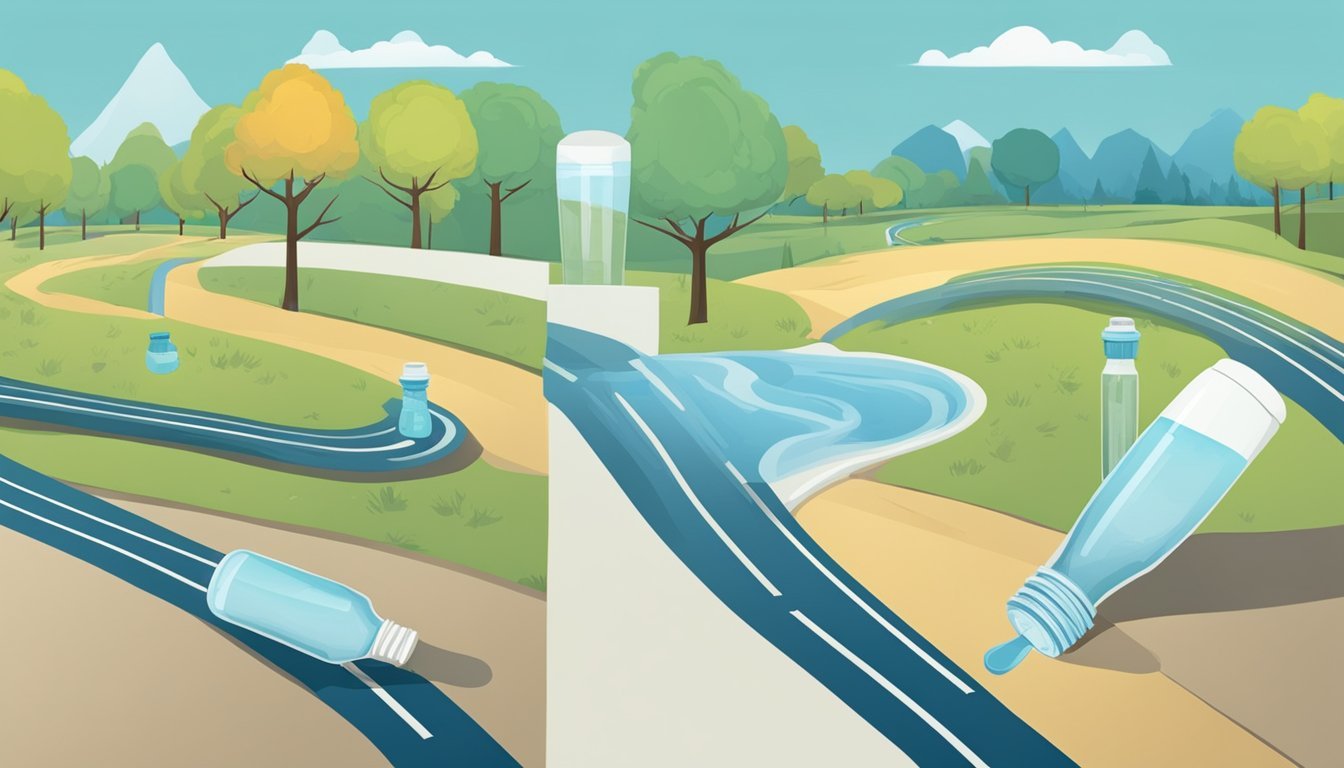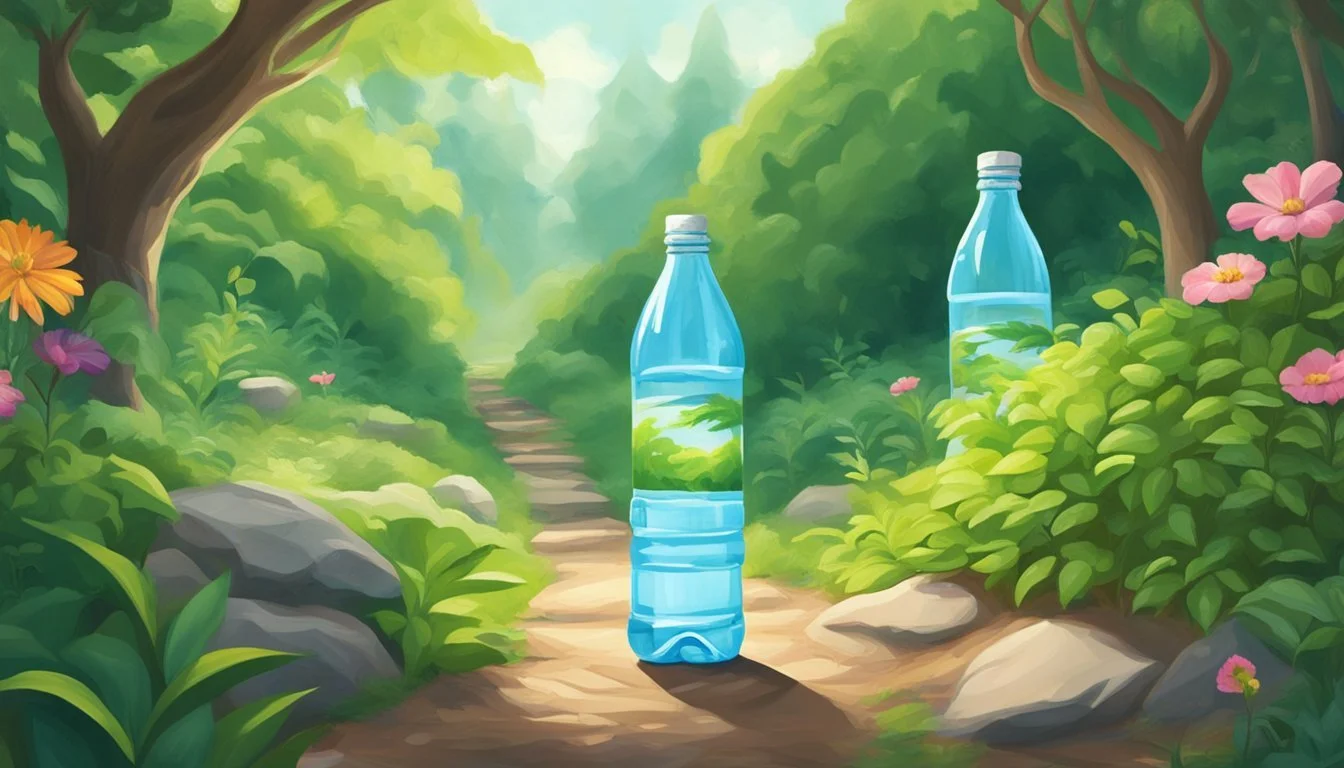Path vs. Action
Comparing Top Bottled Water Brands
For those navigating the myriad options in the bottled water market, choosing between Path and Action can be a challenge. Both brands boast unique benefits—Path offers refillable aluminum bottles that keep water cold longer and promote sustainability, while Action focuses on maintaining high standards of purity and refreshing taste.
For those prioritizing eco-friendly options and bottle reusability, Path stands out as the superior choice. Their commitment to local sourcing and responsible packaging positions them as a leader in the industry. On the other hand, Action's emphasis on water quality makes it a strong contender for those who value a crisp, clean drinking experience above all else.
The ultimate decision hinges on individual preferences, whether it’s environmental impact or taste that determines the best option. Stay tuned as we dive deeper into the specifics of each brand to help you make an informed choice.
Understanding Bottled Water
Bottled water is diverse, with various types and specific standards for safety and quality. When choosing bottled water, understanding its types, labeling, and regulations ensures a better selection.
Types of Bottled Water
Bottled water comes in various forms, each with unique characteristics. Spring water is sourced from natural springs and contains naturally occurring minerals. Purified water undergoes extensive treatment processes such as distillation or reverse osmosis to remove impurities.
Mineral water boasts a high mineral content, including essential electrolytes like calcium and magnesium. Alkaline water is noted for its higher pH, which some consumers believe offers health benefits. Each type provides different tastes and potential benefits, depending on what you prioritize in hydration.
Label Insights: Ph Levels and Mineral Content
The labels on bottled water can provide crucial information about its contents and quality. pH levels indicate the water's acidity or alkalinity, with a range from acidic (below 7) to alkaline (above 7). Many consumers look for alkaline water, believing higher pH levels aid in balancing body acidity.
Mineral content listed on labels includes calcium, magnesium, potassium, and other essential electrolytes necessary for bodily functions. Spring and mineral waters naturally contain higher levels of these minerals, whereas purified water might have them added back post-filtration. Understanding these details helps consumers make informed choices based on health needs and taste preferences.
Regulations and Standards for Safety and Quality
Bottled water in many countries, including the United States, is regulated to ensure safety and quality. Agencies like the FDA monitor the industry, requiring strict standards for production, labeling, and distribution. These regulations mandate regular testing for contaminants and maintenance of sanitation procedures.
Labeling standards ensure that consumers are informed about the source and processing methods. Information such as THMs, nitrates, and sodium content might also appear, providing transparency. These regulations aim to ensure that bottled water is not only safe to drink but also meets quality expectations.
Environmental Impact of Bottled Water
The environmental impact of bottled water is a growing concern, with issues ranging from plastic pollution to the recyclability of packaging materials. This section dives into these concerns and explores potential sustainable alternatives.
Single-Use Plastic Bottles and Pollution
Single-use plastic bottles contribute significantly to plastic pollution. These plastic bottles often end up in oceans, rivers, and the environment, breaking down into harmful microplastics. The production of plastic water bottles also emits substantial carbon emissions, exacerbating climate change.
Microplastics from discarded bottles have infiltrated ecosystems, impacting wildlife. Studies show that bottled water production requires extensive resources, compounding the negative environmental impact. Consumers must recognize the link between single-use plastics and the plastic crisis.
Recycling Challenges and Recyclability
While many plastic bottles are labeled recyclable, the actual recycling rates are alarmingly low. Many bottles fail to reach recycling facilities and are instead destined for landfills. The presence of BPA in plastics raises concerns about the health hazards associated with recycling processes.
Efforts to create a circular economy face hurdles due to contamination and processing issues within the recycling system. Solutions involve enhancing recycling infrastructure and educating consumers about proper disposal practices.
Sustainable Alternatives to Traditional Bottled Water
Seeking alternatives, some manufacturers are producing sustainable bottled water using materials like biodegradable plastics and plant-based packaging. These efforts aim to reduce the environmental impact of traditional plastic bottles.
Consumers are also encouraged to shift towards reusable bottles, which offer a long-term solution to the plastic crisis. Sustainable alternatives not only minimize waste but also decrease the dependency on single-use plastics.
The Emergence of Aluminum Bottles
Aluminum bottles present a promising replacement for plastic water bottles. Unlike plastic, aluminum is infinitely recyclable, making it a valuable material in a circular economy. The production of aluminum bottles, though energy-intensive, has a lower long-term environmental impact due to their recyclability.
Aluminum bottles do not leach microplastics or chemicals, appealing to environmentally conscious consumers. Their durability and ability to keep beverages cool further enhance their appeal as a sustainable and eco-friendly option.
Health and Hydration
When considering bottled water, it's essential to evaluate how effectively it hydrates, the presence of any contaminants or toxins, and the potential benefits of minerals and electrolytes.
Evaluating Hydration Efficacy of Different Brands
Different bottled water brands claim various benefits regarding hydration. All water hydrates the body; however, the effectiveness can vary. Brands like Path and Action prioritize pH levels and mineral content. Path water is known for its balanced pH, which some believe enhances hydration by maintaining body pH.
Action water emphasizes remineralization, adding minerals like calcium and magnesium for improved hydration. These minerals are crucial for fluid balance and muscle function.
Both brands provide safe drinking water, but personal preference regarding taste and specific mineral needs will influence their hydration efficacy.
Contaminants and Toxins in Bottled Water
Contaminants in bottled water can significantly affect its safety and health benefits. Both Path and Action water undergo rigorous purification processes to reduce contaminants. Common concerns include microplastics, heavy metals, and chemical byproducts.
Action's methodology focuses on eliminating microplastics through advanced filtration. Path uses sterilization processes to ensure water purity, reducing heavy metals and toxins. Despite purification efforts, trace amounts of contaminants can still be present, but these brands continually strive to meet high safety standards.
Consumers should always check for third-party testing results to verify the absence of harmful substances.
Benefits of Minerals and Electrolytes
Minerals and electrolytes in drinking water contribute significantly to overall health. Path water offers a mineral balance that includes essential elements like potassium and sodium. These elements help in maintaining electrical neutrality in cells and are vital for muscle contractions and nerve impulses.
Action water emphasizes added electrolytes for active individuals. Electrolytes like magnesium and calcium are added to boost hydration efficiency and aid recovery post-exercise. These minerals ensure that the body remains well-hydrated and supports various physiological functions.
Both brands provide options suited for different needs – Path for everyday hydration and Action for more active lifestyles.
Choosing the right bottled water depends on individual health needs and daily activities, focusing on the hydration, safety, and mineral content offered by each brand.
Choosing a Water Bottle
Selecting the right water bottle depends on various factors like your lifestyle, the bottle's environmental impact, and water quality. This section delves into reusable bottle options, factors to consider, and a comparison of popular water brands.
Reusable Bottle Options
When choosing a reusable bottle, one major option is glass bottles, such as those used by Voss or Mountain Valley. Glass is inert and does not leach chemicals into the water, making it a safe choice.
Stainless steel bottles are another excellent option, offering durability and thermal insulation. Brands like Hydro Flask and Klean Kanteen provide BPA-free, insulated stainless steel bottles that keep water cold for extended periods.
For those who prefer lightweight options, BPA-free plastic bottles are practical despite being less environmentally beneficial. Reusability reduces waste, and bottles from brands like Nalgene and CamelBak are popular picks.
Factors in Bottle Selection
Several factors should influence your choice of a water bottle. Material is crucial, with options including glass, stainless steel, and BPA-free plastic.
Durability matters, especially for active lifestyles. Stainless steel bottles typically offer the best durability, while glass, though fragile, is preferred for purity.
The design of the bottle should match your needs. Consider the size, weight, ease of cleaning, and whether it's insulated. Insulated bottles maintain temperature, which is beneficial for outdoor activities.
Finally, the bottle's environmental impact should be considered. Reusable bottles mitigate the negative effects of single-use plastic bottles.
Comparing Bottled Water Brands
Comparing bottled water brands involves evaluating water quality, taste, and packaging. Fiji, Evian, and Voss are known for high-quality water sourced from natural locations, with Fiji sourcing from an underground aquifer in Fiji and Evian from the French Alps.
Brands like Smartwater and LIFEWTR focus on purification and enhanced mineral content. Aquafina and Dasani are popular but often face criticism for being simply purified tap water.
Icelandic Glacial and Mountain Valley offer naturally alkaline water, which appeals to those seeking higher pH levels. Core Hydration and Poland Spring also cater to niche markets with specific mineral compositions.
By examining these aspects, consumers can make an informed choice about the best water brand for their needs.
Innovations and Trends in Bottled Water
The bottled water industry is evolving with new technologies, expert evaluations, and expanded online marketplaces. Companies are focusing on water purification methods, taste differentiation, and the digital shift in sales.
Technological Advancements in Bottling
Technological innovations in bottling are transforming the industry. Reverse osmosis and advanced filters are becoming standard for improving water purity. Brands like Pathwater are emphasizing refillable and durable bottles, minimizing waste. Additionally, adjusting the pH level of bottled water caters to consumers' health preferences. These advancements ensure higher standards of safety and sustainability, addressing eco-conscious trends.
Water Sommelier and Taste Tests
The role of the water sommelier is gaining prominence, guiding consumers through refined taste tests. Companies now employ experts to differentiate their products based on taste profiles and mineral content. This emphasis on taste and quality elevates the consumer experience. Brands that focus on taste differentiation often conduct public tastings to highlight their unique flavors, making it an essential marketing strategy.
The Role of Online Marketplaces
Online sales channels are rapidly expanding the market for bottled water. Through e-commerce platforms, brands reach a broader audience beyond grocery stores. Digital marketplaces allow consumers to easily purchase various types of bottled water, including premium and niche brands like Water Pro. This convenience boosts sales and offers consumers access to a wider selection, enabling them to make more informed choices based on detailed product information available online.
Conclusion
When evaluating Path and Action bottled water, several factors come into play. Path emphasizes sustainability and purity with a clean supply chain, appealing to eco-conscious consumers. Action, on the other hand, targets those seeking performance and hydration benefits.
Path Bottled Water:
Pros:
Sustainable packaging
Pure sources
Cons:
Might lack specific health benefits
Action Bottled Water:
Pros:
Performance-focused
Enhanced hydration
Cons:
Potentially higher environmental impact
Both brands cater to different consumer needs. Path supports environmental sustainability and purity. Action enhances hydration and performance. Choice depends on individual preferences and priorities.
More About Path
Mountain Valley Spring Water vs Path: Which Bottled Water is Better?
Path vs Whole Foods Italian Still Mineral water: Which Bottled Water is Better?




